After our mega day in the foothills and our late night with a few large spectacular owls, you'd think we'd be happy for a lie in. But if you think that you do not know birders; some of us (me included) are a headstrong group of obsessives, who'll stop at nothing for the next bird (more or less); thus, next morning, we ate breakfast pre-dawn and headed straight out in the field. Our first clear target of the day was an interesting thrush; not so much interesting in appearance for, in truth, it is rather dull, coloured in drab olive tones, but more for the story behind it... This turdus thrush was first collected in 1961, and in spite of a different coloured bill (yellowish-green) and a different-coloured tail (grey), from "normal" dark-billed, rufous-tailed, Hauxwell's Thrushes, the specimen was considered as a Hauxwell's all the same. In 2007 the excellent field guide "Birds of Peru" was produced, and in there, clear as day, on plate 256 are two, quite different, illustrations of Hauxwell's Thrush; one depicted with an olive bill, yellowish eye ring, and greyish tail, labelled as a "gray-tailed morph", and another with a more rufous body and tail colour, lacking the pale eye ring, and with a dark bill. They are as different as some of the other species of thrushes in this section. To be fair, one of the co-authors of this brilliant field guide (one of my favourite guides), and original collector of the 1961 specimen, legendary ornithologist John P. O'Neill, in this guide, if you delve into the text, lie the immortal words "probably a separate species". Then from 2003 and later, due to the field skills of Barry Walker and B. J. O'Shea, and working with Dan Lane, Brett Whitney and others, strange thrush vocalisations, led to the final lightbulb moment; this strange, pale-billed, grey-tailed, "morph" of Hauxwell's Thrush sounded quite different from that species after all; a new thrush was born, the so-called Varzea Thrush. After a confusing 50 years in a dusty specimen draw, in a 2011 paper, that 1961 thrush finally got a name, and a rightful identity all of its own (paper here). I am not in any way mocking the people behind this; I have not described a single species after all, and am in awe of scientists of this creed, but it does make for an interesting story. So back to Peru in September; it turns out that the wonderful Waqanki Lodge, is one of the better places to try and track down this enigmatic thrush. The reason for this? An individual regularly feeds on the ground very close to the lodge; or so we were told. Our afternoon search the day before came up empty, although we did hear some intriguing calls, which were clearly coming from a near Varzea Thrush. Thus, after a slightly later than usual, dawn-time, breakfast, we set out in search of this turdus just a few minutes walk away. Our first scout of the area, revealed no thrushes feeding on the ground, and a possible Varzea Thrush sitting completely backlit in a tree, which we had to let go, with no clear ID features being seen. We walked back over the same areas, and Carlos quickly gestured to a thrush feeding on the ground: pale bill, we had it VARZEA THRUSH!
Some final birding around Waqanki that morning (when we refrained from our super-hike activities of the day before, having already bagged the antwren, and in need of a little easier birding). In the open areas we tracked down a pair of nesting Blue-winged Parrotlets, and both Stripe-necked and Pearly-vented Tody-Tyrants. Returning deeper into the forest again, passing canopy flocks held Yellow-bellied Tanager and Purple Honeycreeper, and we got cracking looks at Wing-barred Piprites, a rather handsome, and vociferous, manakin species. Once again (as the day before) we were serenaded by a Chestnut-throated Spinetail, but could not drag it into view, as it called from a thick tangle below us. Mark and I had had enough of this bird, and found a way into the valley bottom, working our way right into its favoured thicket as we did so. Murphy's Law of course ensured that by the time we made it into our idyllic position, the spinetail had fallen silent! We waited, and waited, and then suddenly it returned our playback, and then suddenly appeared on the ground, crawling around more like a tapaculo than a spinetail, just eight feet away! We then packed up and prepared to leave for the cloudforests of Abra Patricia. The beauty of this area is that the route up to those cloudforests is largely forested, meaning a range of altitudes can be covered. Before we rose up in elevation though, we dropped down the road a few bends, parked up by a bridge crossing a deep, dark cavern, and admired some 47 Oilbirds roosting underneath.
Working our way up towards the enticingly sounding "Owlet Lodge", activity was generally on the low side, with the sun beating down, and clouds few and far between (a death knell for bird activity in the Andes). Finally, we arrived at a spot for some "Andean Royalty", jumped out of the van, and walked straight on to the scarce Rufous-tailed Tyrant and the fancy Flame-faced Tanager. However, the Royal Sunagel, our primary avian target, was nowhere to be seen. We moved further up the road, with the aim of trying another spot. However, our focus was quickly switched when the harsh, jay-like cries, of a group of White-capped Tanagers reached our ears. One of the group, Rick, had missed this bird in southern Ecuador, and has a tanager fetish; we simply had to find them. While Nick scouted for the sunangel, I tried calling in the tanagers. They fell silent, when Nick returned with his significantly louder speaker; he cranked up the volume, pressed play, and we watched as seven of these gorgeous tanagers sailed in and landed alongside us. These are big boisterous tanagers, which feel more like jays than tanagers, (they sound so similar to jays, they can cause you to question which it is you have heard).
After spending over a quarter of an hour with the "other Snowcap" (i.e. the tanagers), we climbed a small hill, with some interesting looking flowers below. Nick pressed play again, when a deep blue hummingbird darted in: Royal Sunangel! We'd barely started breathing following the splendid site of the male sunangel, when a pair of Blue-browed Tanagers suddenly appeared beside us too. The afternoon was turning into a bit of a classic, but there was little of it remaining, so we headed straight for Owlet Lodge, our fantastic lodging for the next three nights. We checked in, (or rather Nick checked us in while we feasted on hummingbirds at the feeders). The feeders were buzzing, and I quickly found my main target, a lifer Emerald-bellied Puffleg, which was backed up at the feeders by Long-tailed Sylph, Sword-billed Hummingbird, White-bellied Woodstar, Bronzy and Collared Incas, Fawn-breasted Brilliant, Chestnut-breasted Coronet, Green Violet-ear, and Booted Racket-tail.
Dusk was approaching, which could only mean one thing: O-W-L-I-N-G! We had already enjoyed rare success with this, but we were not in a supreme area for owls, and the haunt of the enigmatic Long-whiskered Owlet. As it got dark, the image of this owl preyed on our minds...







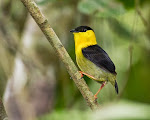
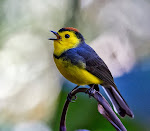
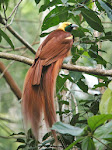







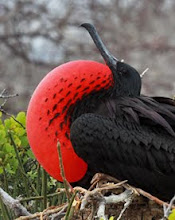
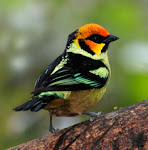
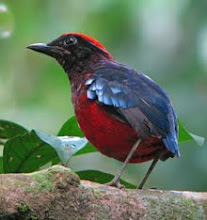

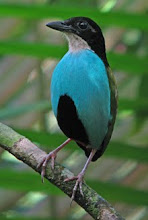
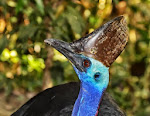
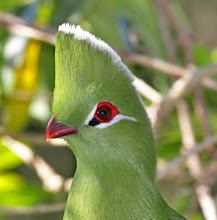
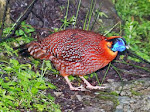

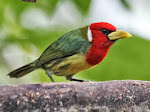
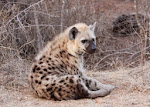
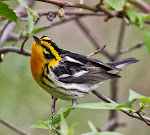

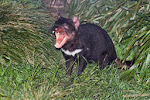
No comments:
Post a Comment